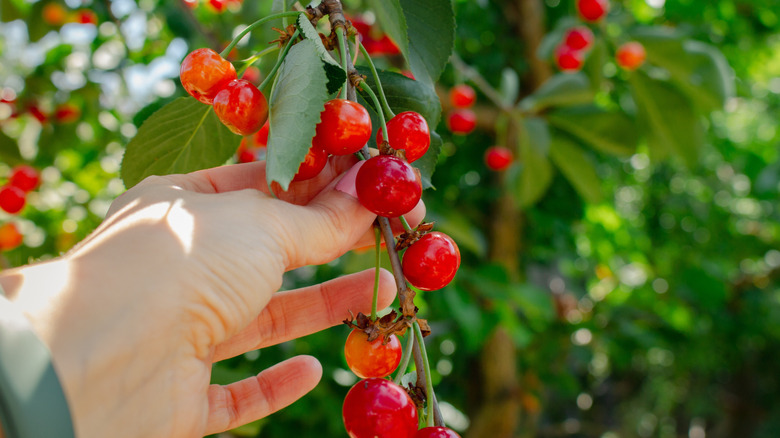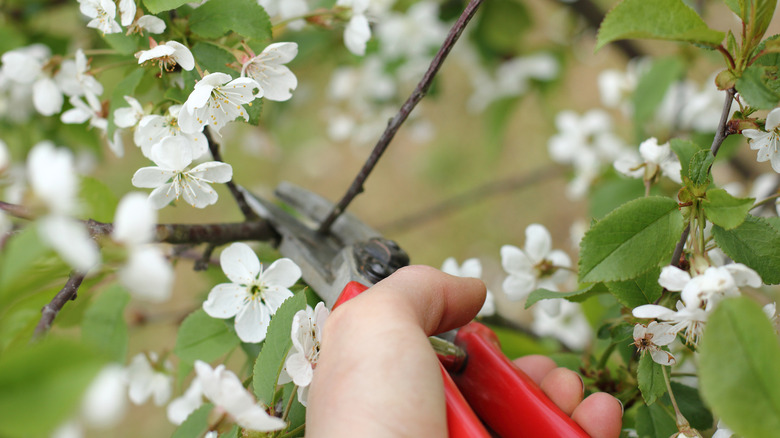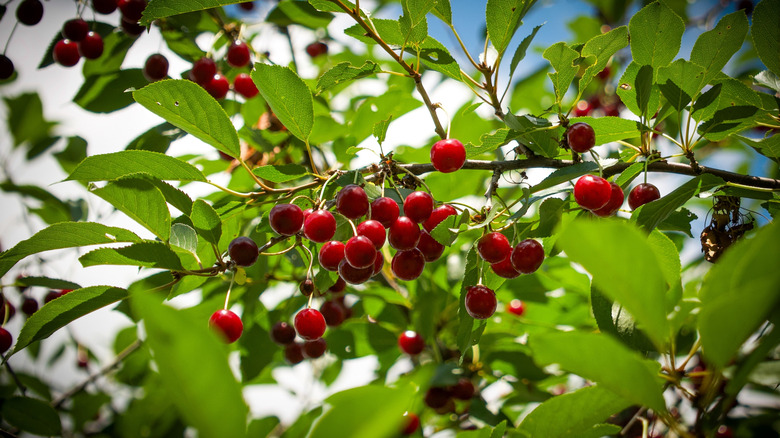The Varieties Of Cherry Trees That You Should Try Growing In A Colder Climate (One Type Is Great For Pies)
Summer brings magic to your backyard when you can choose fresh cherries directly from your tree. If you live in a cold weather region, you may believe cherry tree cultivation is impossible for your area. Thankfully, that's not the case! Some cherry tree varieties are surprisingly hardy and actually thrive in chilly temperatures, like 'North Star' (Prunus cerasus 'North Star') and 'Mesabi' (Prunus cerasus 'Mesabi'). Cold-hardy cherry tree varieties exist for every taste preference between sweet snacking cherries and tart baking cherries. The key to success lies in selecting tree varieties which can withstand late frosts, shorter growing seasons, and cold spring nights.
In addition to the 'North Star' and 'Mesabi' cultivars, the 'Evans Bali' cherry tree (Prunus cerasus 'Evans Bali') is a top choice among fruit trees that grow in colder climates. It stands out as a cold-tolerant tart cherry variety that provides northern gardeners with exceptional growing satisfaction. This cherry tree has become popular in USDA Zones 2 and 3 because it's not only cold-tolerant, but it also yields plentiful harvests and delivers the perfect baking flavor since its tart taste makes it ideal for homemade pies.
Aside from all that, this tree is also a lovely addition to a gorgeously landscaped backyard. It produces fragrant and beautiful, clustering white flowers in the spring and the leaves turn to a stunning orange in autumn. The combination of its strong resistance to cold weather, its consistent fruit output, and its aesthetic appeal makes the 'Evans Bali' cherry an great choice for anyone who wants to cultivate cherry trees in northern climates.
How to care for an 'Evans Bali' cherry tree
Curious how you can grow and care for this lovely fruit tree for a steady supply of delicious cherries? Cultivating the 'Evans Bali' cherry tree starts with proper planting. It's a compact semi-dwarf variety and it only grows to about 15 feet tall, so it needs at least 15 feet of space of both spread and height. You should also select a planting location that gets full sunlight and has well-draining soil to avoid standing water.
This type of fruit tree is pruned in early spring or late winter while the tree is dormant. Proper pruning enhances the trees sunlight absorption, aeration, and fruit production while helping to prevent diseases. While it's a self-pollinating fruit tree variety and doesn't require a second tree for cross-pollination, the 'Evans Bali' cherry does well at attracting beautiful songbirds to your garden. However, keep in mind that birds can quickly become the tree's hungriest pest and they can eat your cherries up before you can harvest them. If birds become an issue, you can net your tree to limit their access to its fruits.
Other cold-hardy cherry tree varieties
While the 'Evans Bali' cherry is a rock star in cold climates, it's not the only option worth exploring. The 'North Star' cherry is an even smaller, compact sour cherry tree that's incredibly hardy and easy to grow. It has a similar look and feel to the 'Evans Bali', with spring blossoms and mid-summer fruit, and it's also self-pollinating. Then there's the 'Mesabi' cherry — a cross between sweet and tart cherries — which gives you a slightly sweeter fruit while still tolerating cold temperatures down to Zone 4.
For a more traditional sweet cherry flavor, the 'Stella' cherry tree (Prunus avium 'Stella') is worth a try if you're in a slightly milder northern zone. It grows a bit taller and requires about 20 to 35 feet of spread and height space, so be sure to account for that space when you're choosing the best layout for your garden. But the rich, sweet fruit is well worth the effort. All of these trees benefit from the same basic care: Plenty of sunlight, good drainage, and occasional pruning. With the right setup, even northern gardeners can enjoy the sweet rewards of a summer cherry harvest!


